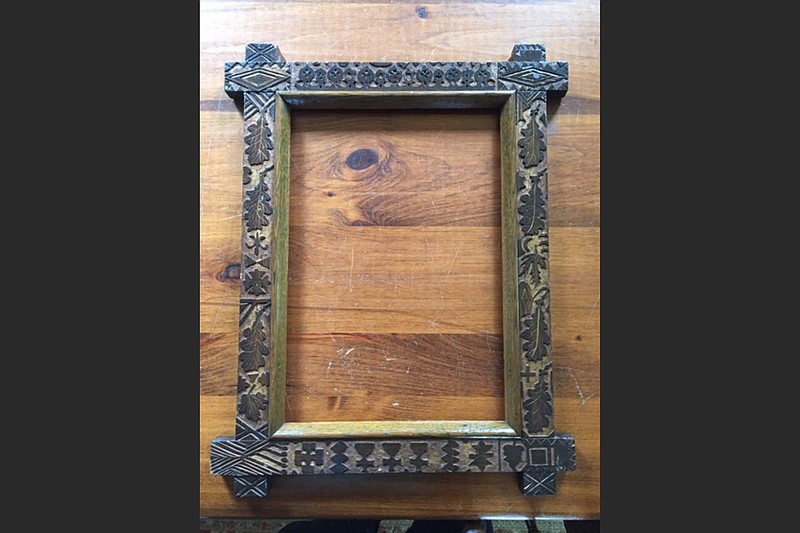DEAR HELAINE AND JOE: I believe this frame to be tramp art, and while researching this 19-inch-by-14-inch frame, I discovered that Helaine was a collector and appreciator of this kind of art. I live in Ontario, Quebec, Canada and found this piece in a second-hand store for $10. What can you tell me about it?
Thank you, — K.G.
DEAR K.G.: The term “tramp art” is a misnomer if there ever was one. The term congers up images from the late 19th- to the early 20th-centuries of unshaven men dressed in tattered and patched clothing, riding the rails in or under railroad boxcars, and eating beans out of a can over an open fire. These individuals were pejoratively called “tramps” or “hobos” or more euphemistically “forgotten men.”
In short, “tramp art” was not made by tramps. Now that we have disposed of the inappropriate name, an explanation of what “tramp art” actually is might be in order. The term “tramp art” usually refers to objects that have been constructed with small panels made from recycled cigar boxes or packing crates.
These thin wooden segments taken from the boxes and crates were chip carved and layered to form — for the most part — decorative containers and picture frames in various sizes and shapes. It was not widely known until Helaine’s book on the subject came out in 1976 that full-scale furniture was made using this technique as well. This included a roll-top desk, floor lamps, tables, a chaise lounge, full-size cupboards, bed frames, and even a radio cabinet.
The fabrication of so-called “tramp art” required the dexterity of a skilled craftsman with a good sense of design and three-dimensionality. Making these objects large and small was not an activity conducive for a hobo riding the rails hither and yon with few possessions — and probably fewer artistic skills.
Turning to the frame belonging to K.G., it is a beautifully hand-carved piece with various leaf shapes, crosses, flowers, diamonds, “X’s” and fleur-de-lis — but there is no layering of wooden panels that would make this piece an example of “tramp art.” Its shape is a typical late Victorian crisscross design (sometimes called a “cross-corner” frame) and the decoration does suggest a French-Canadian origin.
The relief carved decoration appears to show maple and yellow birch leaves (yellow birch is the official tree of Quebec) along with Quebec’s cross and fleur-de-lis symbols. The rest just seem to be motifs that appealed to the folk artist who created this very attractive piece as a personal expression of his (or her) home environment.
We feel that this piece was probably carved sometime between about 1885 and 1910, and we also think that K.G. got a good deal at the second-hand store. In an antiques shop run by a knowledgeable dealer, K.G. would probably have had to pay somewhere between $100 to $150 to own this interesting frame.
Helaine Fendelman and Joe Rosson have written books on antiques. Do you have an item you’d like to know more about? Contact them at Joe Rosson, 2504 Seymour Ave., Knoxville, TN 37917, or email them at treasures@knology.net. If you’d like your question to be considered for their column, please include a focused, high-resolution photo of the subject with your inquiry.
